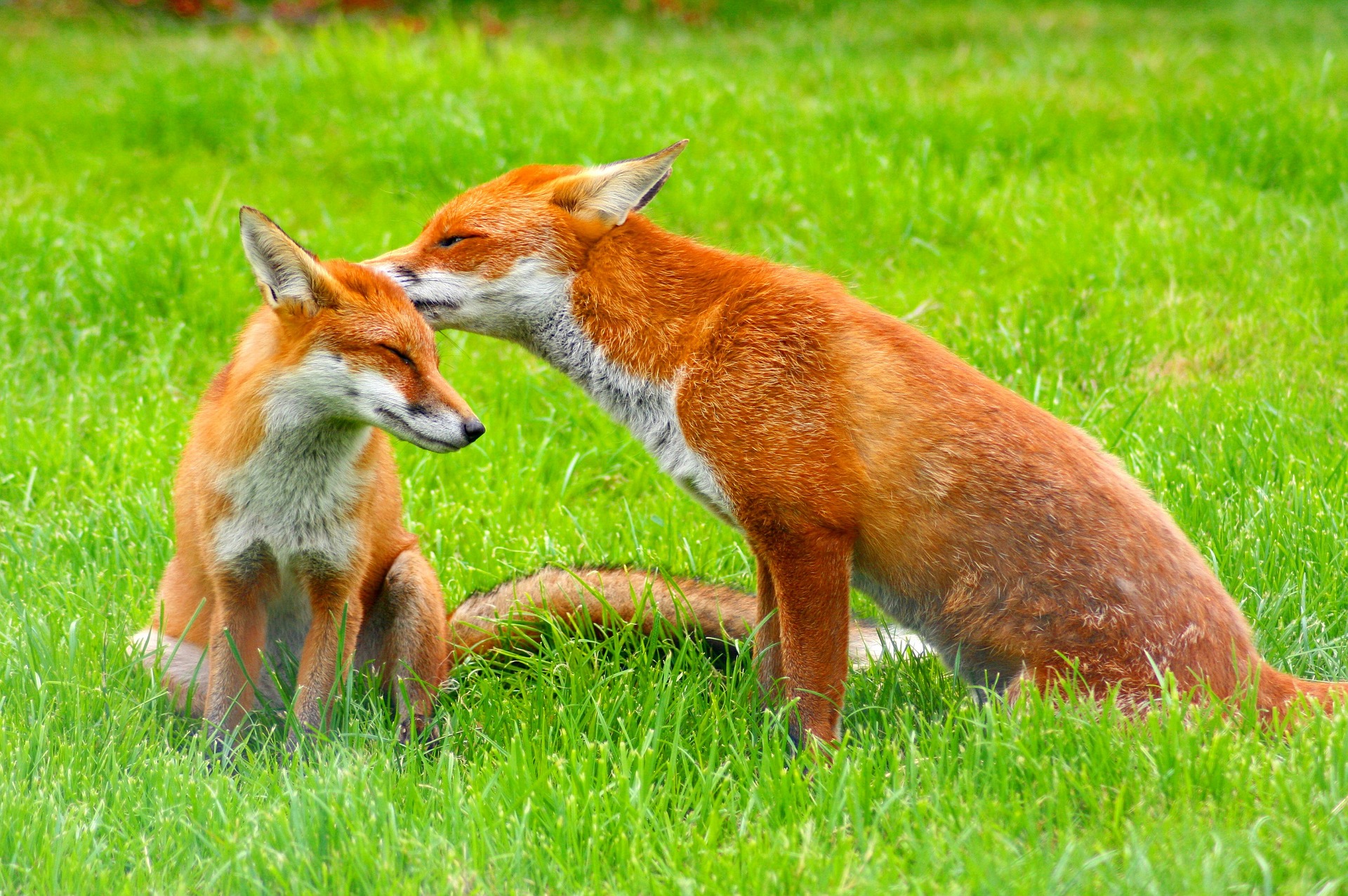Please note that as of August 1, 2022, the Oakville & Milton Humane Society will no longer provide wildlife service in Milton, as this service will now be administered by the Town of Milton. If you find an injured, sick or orphaned wild animal in the Town of Milton please call 905-878-7252 ext. 2254, or email: bylaw@milton.ca
Wildlife
At the Oakville &Milton Humane Society, our mandate is to care for sick, injured and abandoned animals. There is a great deal of research and legislation behind our protocols – healthy wildlife is part of our environment and we must learn to co-exist alongside them.
If you believe an animal in Oakville is sick or injured, the best thing to do is call the shelter, so that we can dispatch an Animal Protective Services Officer to attend. Sick and injured wildlife requires professional care, so that they have the best chance of survival in their natural habitat.
Wildlife Living in the Oakville Area
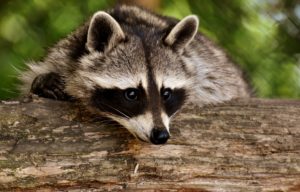
I found a sick raccoon. Does it have rabies?
Since the 2015 outbreak, there have been no confirmed cases of rabies in raccoons in the Town of Oakville. The Oakville & Milton Humane Society is helping the Ministry of Natural Resources in continued testing for rabies. If you see a raccoon that is behaving strangely, it is likely to have a neurological disease known as canine distemper. Symptoms of distemper include lethargy, walking in circles or appearing disoriented, falling over or stumbling, and milky discharge around the eyes. Distemper is not a disease that humans can catch, and dogs are typically vaccinated for distemper. If you encounter a raccoon that appears to be sick or injured, please call us so that we can dispatch an Animal Protective Services Officer to attend.
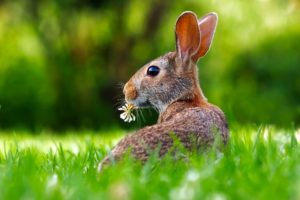
Rabbits nest in a shallow hole or depression in the soil. If the den is undisturbed and the bunnies appear healthy – no flies or bugs on them – the best thing to do is to make sure they remain covered with the grass and fur that is on top of the den and leave them where they are. Baby bunnies are very difficult to rehabilitate as they require very specific bacteria derived from their mother’s milk in order to thrive. It may seem as if the bunnies have been abandoned, but the mother will typically only attend at dawn and dusk in order not to attract predators. The best way to tell is to place two light sticks or pieces of string over the den in an “X” pattern and leave the site alone for 24 hours. If the X is disturbed after 24 hours, you know the mother is attending.
If you see bunnies in or outside of the den that show signs of distress – dehydration, bugs or flies around or on them – please call us so that we can dispatch an Animal Protective Services Officer to attend.
Bunnies only take about three weeks to leave the den. Leaving healthy bunnies where they are is always the best chance they have for survival. If you would like to deter rabbits from creating den sites on your property, you can place colourful, shiny markers like flags or pinwheels around your property. The colour and movement deters them from nesting nearby.
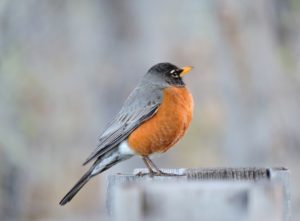
We have identified some areas of concerns for Avian flu in Oakville and are handling the situation accordingly. We are working closely with the Town of Oakville and Halton Region. If you have any questions regarding Avian Flu please contact Halton Region by phone or on their website (https://www.halton.ca/The-Region/About-Halton-Region). Our only role at this time is to pick up dead or injured/ill wildlife.
Many people have the best intentions when they see wildlife that appears to be in distress, and their first instinct is to pick it up and take it inside. If you suspect a bird on the ground is injured, please call us before handling or removing it. In most cases, if you do not see any physical signs of injury, a bird on the ground that has all or most of its feathers is what’s known as a fledgling. A fledgling is a bird that has been pushed out of the nest in order to learn to fly from the ground up. They can appear injured as they only fly in short bursts and then rest for long periods of time, sometimes hopping around instead of flying. A fledgling’s best chance of survival is being left right where it is – the parents are attending to it and it will learn to fly fully in just a few days.
If the bird is a nestling – no feathers, or just a few downy feathers, possibly with eyes still closed, then the best thing to do is to identify if the animal is in distress and if so, please call the Oakville & Milton Humane Society. If there are no signs of distress, look for the nearby nest so you can place the nestling back inside. If you are unable to locate a nest or it has been destroyed, please call us so that we can advise you or dispatch an Animal Protective Services Officer.
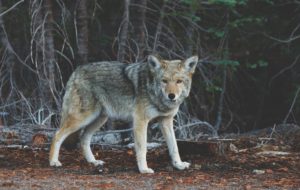
Coyotes are very much a part of life in the area. There is much misinformation surrounding these species that creates confusion and fear in the community. Coyotes are not known for attacking humans, however they have become very comfortable around us because they are used to living in an urban environment.
The best thing to do when you see a coyote in an area where it should not be is to employ a technique known as “hazing.” The exception to this is that coyotes with pups should never be hazed. Hazing involves making yourself appear as big and loud as possible. You can yell, stomp, clap, blow a whistle, bang pots and pans and generally make as much noise as possible. At night, you can use bright lights or leave talk radio playing, as the sound of human voices tends to deter them from coming around. If you are out walking, carry a black plastic garbage bag in your pocket and snap it through the air quickly, inflating it, if you see a fox or coyote. The noise is unfamiliar to them and will scare them away. These things done consistently as a community effort are proven to successfully teach them to learn to be wary of humans again.
Coyotes and foxes reside within a large territory, so they will move on to another area if they think an area is inhospitable to them. The Town of Oakville has a helpful video on hazing: https://www.youtube.com/watch?v=V0CS4_-sQDE
Another important aspect of coexisting with coyotes is responsible pet ownership. Making sure that you are in compliance with the Town of Oakville Animal Control By-Law by always walking your dog on a leash and making sure that your cat does not run at large will go a long way toward reducing conflict situations. Additionally, it is important to monitor your pets when they are out in your backyard to ensure their safety.
To report a coyote sighting in Oakville, please use the following page:
If you think a coyote or fox looks as though it’s “stalking” you, this is actually a behaviour called “shadowing.” They are interested in what is going on in their territory, so they will stare at people or animals they see nearby to assess what they are doing. This is just a display of natural curiosity, not predatory behaviour. Hazing helps to deter this behaviour.
For more information on coyotes, please visit this site:
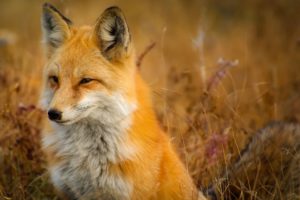
Foxes are very much a part of life in the area. There is much misinformation surrounding foxes that creates confusion and fear in the community. Foxes are not known for attacking humans, however they have become very comfortable around us because they are used to living in an urban environment.
The best thing to do when you see a fox in an area where it should not be is to employ a technique known as “hazing.” The exception to this is that foxes with pups should never be hazed. Hazing involves making yourself appear as big and loud as possible. You can yell, stomp, clap, blow a whistle, bang pots and pans and generally make as much noise as possible. At night, you can use bright lights or leave talk radio playing, as the sound of human voices tends to deter them from coming around. If you are out walking, carry a black plastic garbage bag in your pocket and snap it through the air quickly, inflating it, if you see a fox. The noise is unfamiliar to them and will scare them away. These things done consistently as a community effort are proven to successfully teach them to learn to be wary of humans again.
Foxes reside within a large territory, so they will move on to another area if they think an area is inhospitable to them. The Town of Oakville has a helpful video on hazing: https://www.youtube.com/watch?v=V0CS4_-sQDE
Another important aspect of coexisting with foxes is responsible pet ownership. Making sure that you are in compliance with the Town of Oakville Animal Control By-Law by always walking your dog on a leash and making sure that your cat does not run at large will go a long way toward reducing conflict situations. Additionally, it is important to monitor your pets when they are out in your backyard to ensure their safety.
If you think a fox looks as though it’s “stalking” you, this is actually a behaviour called “shadowing.” They are interested in what is going on in their territory, so they will stare at people or animals they see nearby to assess what they are doing. This is just a display of natural curiosity, not predatory behaviour. Hazing helps to deter this behaviour.
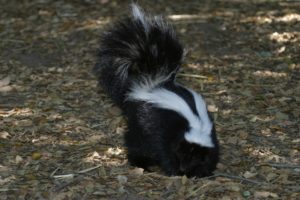
Seeing a skunk is no cause for alarm. Skunks are a normal part of urban and suburban environments. Because they are shy and nocturnal, you don’t see them as often as some other wildlife species. Skunks are an important part of the ecosystem: they eat a lot of grubs and other harmful insects, fallen fruit, and garbage. Think of them as the local cleanup crew!
You almost never hear of a person getting sprayed by a skunk, and that’s because skunks are very reluctant to spray. They only do it as a last resort or when startled. Skunks usually give warning signs before they spray: stamping their feet, standing on their front legs, raising their tail in the air. If you see a skunk doing any of these things, back away slowly. As soon as the skunk feels you’re at a safe distance, it should run off.
Remember that skunks have poor eyesight. If you see a skunk and it hasn’t noticed you yet, talk to it softly to avoid surprising it.
Dogs, on the other hand, do get sprayed by skunks sometimes. That’s because they tend to run up to skunks and startle them. If you know you have a skunk in the neighbourhood, it’s a good idea to keep your dog leashed—especially at dusk and at night when skunks are most active.
Before letting your dog into the yard, call out to the skunks to let them know. This may sound silly (and of course the skunks can’t understand what you’re saying!) but it gives the skunks a warning to get out of your yard. They don’t want anything to do with your dog either.
These are just some of the many animals that call the Oakville area home.
If you have further questions please contact the shelter directly.
Will you pick up dead animals from my property?
The Oakville & Milton Humane Society is contracted by the Town of Oakville to remove deceased animals from Town property. We will remove deceased animals from private property, however we do charge a fee as it helps to mitigate the extra resources required to perform this service and pay for
cremation.
What is Canine Distemper Virus?
As its name implies, canine distemper virus (“distemper” or CDV) is a disease of domestic dogs. Skunks and raccoons — dogs’ distant cousins — can also be affected. Most of our pets are vaccinated against distemper, so it isn’t seen very often in domestic populations. Wild animals aren’t lucky enough to get vaccines, so skunks and raccoons can get sick.
What are the symptoms of distemper?
Initial symptoms of distemper can include fever, vomiting and diarrhea, and extreme thirst. Unfortunately, when wild animals aren’t feeling well they tend to hide. The later, more severe symptoms of distemper are neurological. That’s when sick raccoons and skunks, confused and disoriented, come out into the open and get found. Symptoms can include:
- Wandering aimlessly, especially during the day
- Lack of energy, or “sleepiness”
- Losing balance, appearing “drunk”, or going in a circle
- Approaching people, lack of response, lack of aggression, lack of awareness of surroundings
- Seizuring — from mild twitching to full-on grand-mal seizures
- Goopy or green discharge from eyes or nose
Is there a cure for distemper?
Sadly, no. Dogs diagnosed in the very early stages of the disease may survive with supportive care, but they are likely to have neurological issues for the rest of their lives. Skunks and raccoons are usually not found with distemper until the very late stages. By that point, the neurological damage is permanent. Humane euthanasia is the kindest option.
How can I keep my pets safe?
As its name implies, canine distemper virus is contagious to dogs. However, it is very short-lived in the environment, and spreads through direct contact with fluids of infected animals. It is always a good idea to make sure your pets are up to date on their vaccines. That’s the best way to keep them safe.
Can I trap and relocate a wild animal?
The Ministry of Natural Resources mandates that wild animals cannot be relocated more than 1 km away from where they are trapped or found. It may seem like you are doing a good thing by moving an animal to a more “natural” environment, like the countryside or a wooded area, however wildlife learns to survive in the area in which they are raised and are not able to survive when taken far away from that area. Taking them to an environment where they are unaware of where to find sources of food, water and shelter means that their chances of survival are greatly lessened. They will also face conflict with the same species of animals already inhabiting that area.
Trapping wildlife on your property comes with specific responsibility and falls under the by-law regarding animal control in the Town of Oakville. Trapping and leaving an animal overnight or for an extended period of time without food, water or protection from the elements would constitute Causing Distress to an Animal, which can result in monetary penalties under the by-law. In addition, trapping and relocating is not permissible per the Ministry of Natural Resources (see above.)
Do you rehabilitate injured wildlife?
At the Oakville & Milton Humane Society, it is our goal to alleviate the suffering of sick and injured animals. As such, we have trained professionals on staff who are able to assess the needs of the wildlife we pick up and determine the best course of action for them. Whenever possible, we care for and release animals back into the wild. If the animal requires more extensive rehabilitation, we utilize volunteers who drive wildlife to our network of qualified and licensed rehabilitation centres in southern Ontario. If an animal’s injuries or sicknesses are too extensive to allow for rehabilitation, our trained staff will humanely euthanize the animal to end its suffering. This is always our last course of action, reserved only for cases where the animal cannot be saved. OMHS is not a licensed wildlife rehabilitator.
There are Canada Geese nesting in an inappropriate/dangerous area. What can I do?
Canada Geese are migratory birds, and as such are protected under the Migratory Birds Convention Act (MBCA), 1994. A permit from Environment Canada is required to remove or relocate Canada Geese, therefore we do not have the authority to remove nesting Canada Geese from areas within the Town.
Geese are quite used to nesting in urban environments, but they are fiercely protective of their eggs. Under no circumstances should you approach or try to remove nesting Canada Geese from their chosen site. Instead, cordoning off the area surrounding them, allowing them freedom of movement, and placing warning signs around the perimeter will help to ensure public safety.
